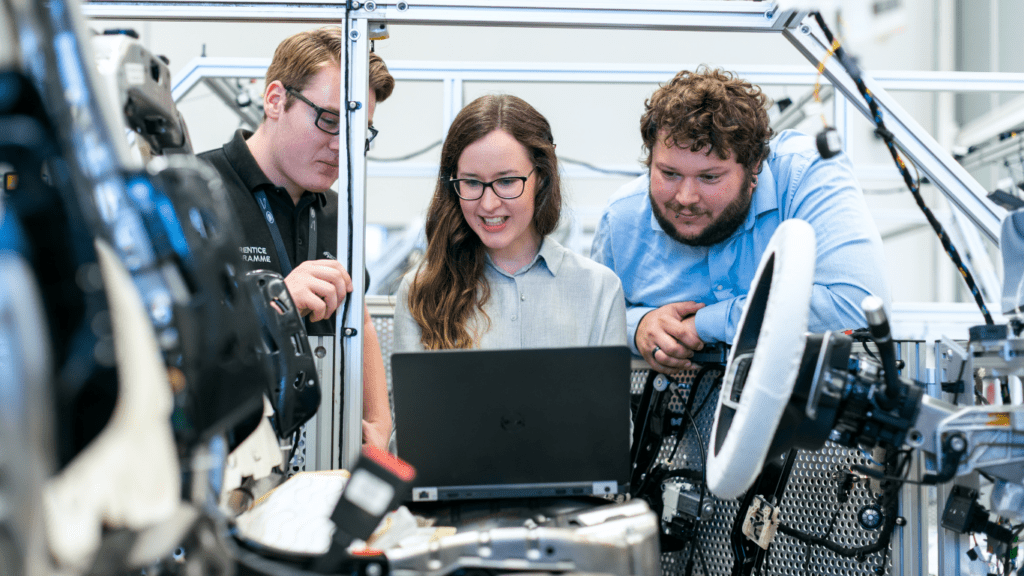The Role of AI in Modern Manufacturing
Benefits of AI in Efficiency and Productivity
AI significantly boosts efficiency and productivity in manufacturing. Machines equipped with AI analyze vast datasets, identifying patterns that humans might miss.
For example, predictive maintenance algorithms foresee equipment failures, reducing downtime.
Automated quality control systems use machine learning to detect defects in real time.
Process automation allows for quicker, more accurate assembly, enhancing overall productivity. By optimizing supply chain management, AI optimizes inventory levels, reducing waste.
Challenges and Risks Associated with AI Implementation
Implementing AI in manufacturing presents several challenges and risks. One major challenge is the high initial investment required for AI technology.
Integrating AI systems into existing workflows can disrupt operations. Skilled labor is needed to manage and maintain AI systems, and there’s a shortage of trained professionals.
Data security is a significant risk, as AI systems are vulnerable to cyberattacks.
Ensuring data integrity and protecting sensitive information are paramount. Additionally, the ethical implications of AI, such as job displacement, must be addressed.
Key Technologies Driving AI in Manufacturing
Machine Learning and Predictive Maintenance
Machine learning enhances predictive maintenance by identifying patterns in sensor data to predict equipment failures.
Predictive maintenance minimizes costly downtime and extends machinery lifespan.
Tools like anomaly detection algorithms spot irregularities that signal future failures.
General Electric reports a 20% reduction in maintenance costs using predictive maintenance.
Robotics and Automation Systems
Robotics and automation systems streamline manufacturing processes, improving consistency and speed. AI-powered robots handle tasks ranging from assembly to quality inspection.
Examples include collaborative robots (cobots) that work alongside humans on the production floor.
Companies like BMW use AI-driven robots to boost productivity and precision in their operations.
These key technologies enhance the manufacturing landscape by promoting efficiency, reducing costs, and optimizing quality control.
Case Studies: AI Innovations in Leading Manufacturing Firms

Advances in Automotive Manufacturing
Leading automotive firms like Tesla and General Motors are using AI for various manufacturing processes.
Tesla leverages AI-powered vision systems to enhance assembly precision and optimize logistics.
These systems detect defects in real time, ensuring high-quality standards. General Motors uses predictive maintenance powered by machine learning.
This technology makes it possible to anticipate equipment failures before they occur, significantly reducing downtime and maintenance costs.
Additionally, BMW’s integration of collaborative robots (cobots) in their factories provides a noteworthy example. These cobots assist human workers, performing repetitive tasks with consistent accuracy.
This collaboration has led to increased productivity and improved precision in manufacturing operations.
AI Transformations in Electronics Production
Some electronics manufacturers have incorporated AI to revolutionize their production processes like:
- Samsung
- Foxconn
Samsung employs machine learning algorithms for quality control. These algorithms analyze vast amounts of visual data from production lines to:
- identify defects
- improving yield rates.
Foxconn, one of the world’s largest contract electronics manufacturers, uses AI-driven robots for assembly tasks.
These robots execute repetitive tasks efficiently, reducing human error.
Moreover, Siemens has adopted AI for predictive maintenance and production optimization.
In their electronics manufacturing facilities, AI solutions monitor equipment health and predict failures. This proactive approach helps avoid unplanned downtime and enhances overall equipment efficiency.
The Future Prospects of AI in Manufacturing
Predictions and Trends for the Next Decade
AI in manufacturing is set to experience major advancements in the coming decade. Five key predictions and trends stand out:
- Increased Automation – Manufacturers will rely more on AI-driven automation, enhancing production efficiency and reducing human error. Autonomous robots, for instance, will handle complex assembly tasks with higher precision.
- Advanced Predictive Analytics – Predictive maintenance will leverage AI to foresee equipment failures before they occur. As a result, equipment downtime will decrease, and maintenance costs will drop.
- Supply Chain Optimization – AI will optimize supply chains by predicting demand patterns and managing inventory more effectively. This will lead to more responsive and agile manufacturing processes.
- Quality Control Improvements – AI will advance quality control by using image recognition and sensor data. These systems will detect defects earlier and with greater accuracy.
- Human-Machine Collaboration – AI will enable more sophisticated human-machine interactions. Cobots (collaborative robots) will work alongside humans, combining accuracy with adaptability.
Impact on Jobs and Skills Development
AI’s impact on jobs and skills in manufacturing will be multifaceted:
- Job Creation and Transformation – New job roles will emerge as AI takes over repetitive tasks. Roles in AI maintenance, programming, and data analysis will become crucial.
- Skill Upgradation – Workers will need to upgrade their skills to interact effectively with AI systems. Training programs focused on AI and machine learning techniques will be essential.
- Increased Collaboration – Human workers will collaborate more with AI systems. Technicians, for example, will use AI tools for diagnostics and process optimization, enhancing their decision-making capabilities.
- Job Displacement Concerns – While AI will create new opportunities, it may also displace some jobs. Industries will need to address this by ensuring workforce transitions and providing upskilling resources.
- Emphasis on Soft Skills – As AI handles more technical tasks, soft skills like problem-solving, creativity, and leadership will become increasingly valuable.
Implementing these advancements and addressing their impact will shape the manufacturing landscape, driving growth and innovation across the industry.


 Alice McClurg - Content Director Alice McClurg leads the editorial team as Content Director at Jackpot Journey Spot. With a keen eye for emerging trends and a deep understanding of the gambling landscape, Alice curates in-depth articles, event highlights, and game overviews. Her expertise helps guide readers through the ever-evolving world of gambling, ensuring they stay informed and entertained.
Alice McClurg - Content Director Alice McClurg leads the editorial team as Content Director at Jackpot Journey Spot. With a keen eye for emerging trends and a deep understanding of the gambling landscape, Alice curates in-depth articles, event highlights, and game overviews. Her expertise helps guide readers through the ever-evolving world of gambling, ensuring they stay informed and entertained.
